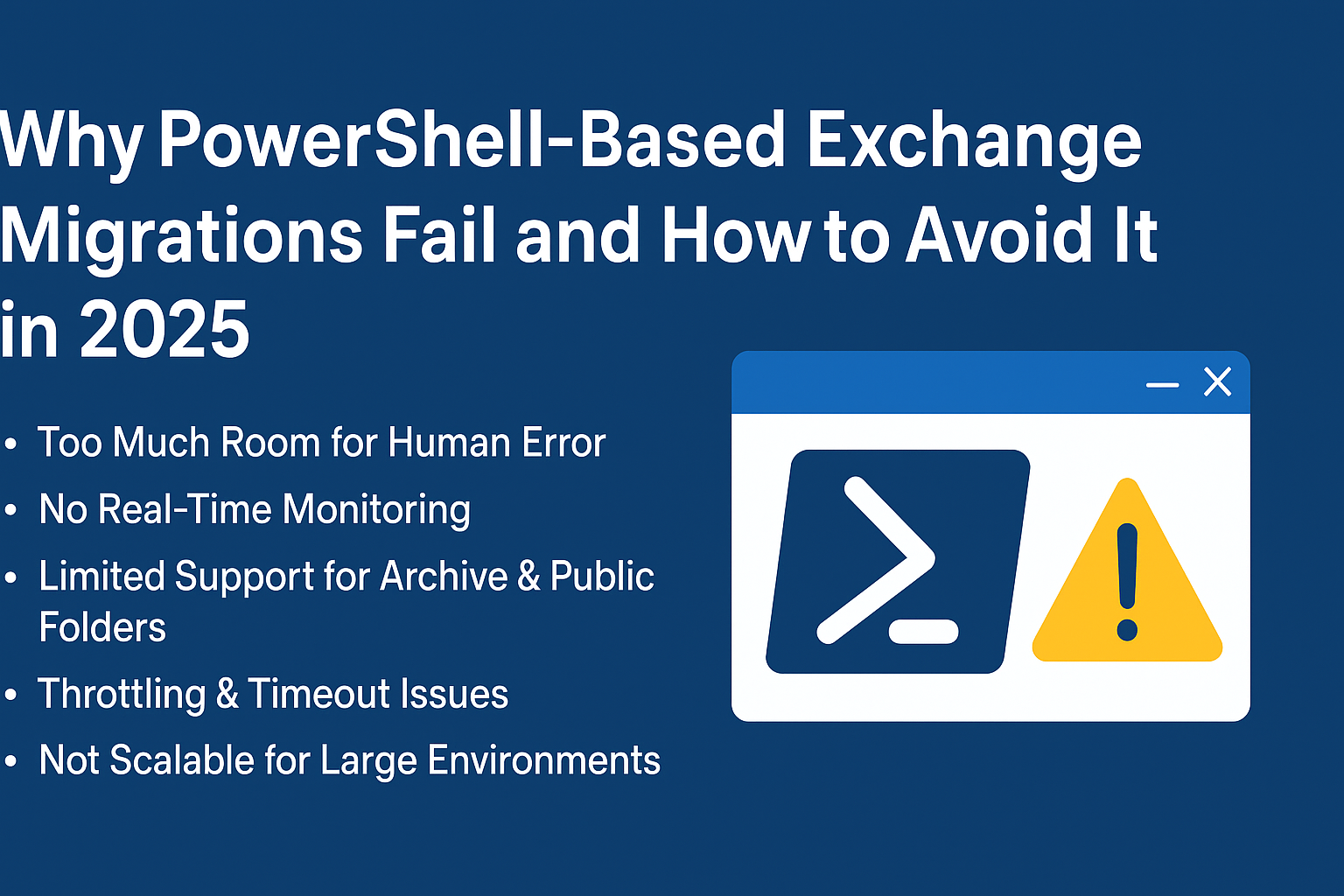Why PowerShell-Based Exchange Migrations Fail and How to Avoid It in 2025!
Let’s be honest: PowerShell is powerful, but when it comes to full-scale Exchange Server migrations, it’s not always practical. While many IT pros turn to PowerShell scripts thinking it's the “standard” way, 2025 has brought forward new challenges that make these manual methods unreliable, especially for complex or large-scale environments.
Why PowerShell Fails in Modern Exchange Migrations:
1. Too Much Room for Human Error
One misplaced command or missing parameter, and your script can break mid-process — risking mailbox corruption or incomplete transfers.
2. No Real-Time Monitoring
You get no intuitive progress bars, alerts, or easy rollbacks. If something goes wrong, good luck finding out where or why.
3. Limited Support for Archive & Public Folders
Migrating public folders, archive mailboxes, or shared mailboxes often requires separate steps or additional scripting complexity.
4. Throttling & Timeout Issues
Large mailboxes or bulk transfers often hit Office 365 throttling limits. PowerShell doesn’t handle retry logic well or resume interrupted jobs.
5. Not Scalable for Large Environments
Manually mapping hundreds of mailboxes, managing permissions, and scheduling out-of-hours migrations just isn’t realistic with scripts.
________________________________________
What You Can Do Instead:
Instead of struggling with fragile scripts and unpredictable results, many IT pros are moving towards automated, GUI-based Exchange migration tools — like the Shoviv Exchange Migration Tool.
https://www.shoviv.com/exchange-migration.html
It offers:
• Direct migration from Exchange 2007/2010/2013/2016/2019 to Office 365
• Archive and public folder support
• Incremental export to avoid duplicates
• Automatic & manual mailbox mapping
• Real-time migration tracking with error logs
• Scheduling for after-hours/weekend migration
________________________________________
Want to Explore Migration Paths Based on Your Exchange Version?
Here are some detailed guides tailored to your version:
• https://www.shoviv.com/blog/migrate-from-exchange-2007-2010-to-office-365/
• https://www.shoviv.com/blog/how-to-migrate-exchange-2013-to-office-365/
• https://www.shoviv.com/blog/ways-to-migrate-exchange-2016-to-office-365/
• https://www.shoviv.com/blog/exchange-2019-to-office-365-migration/
• https://www.shoviv.com/blog/comprehensive-guide-to-migrate-exchange-2013-to-2019/
• https://www.shoviv.com/blog/migrate-exchange-server-2013-to-2016-step-1/
________________________________________
Final Thoughts:
If you're planning a migration in 2025, it’s time to move beyond outdated methods and adopt a smarter, more reliable strategy. PowerShell might still work for small tasks — but for full-scale, business-critical migrations, a purpose-built tool like Shoviv makes all the difference.
No code. No stress. Just smooth Exchange migration.

回答
まだコメントがありません
.png)
新規登録してログインすると質問にコメントがつけられます